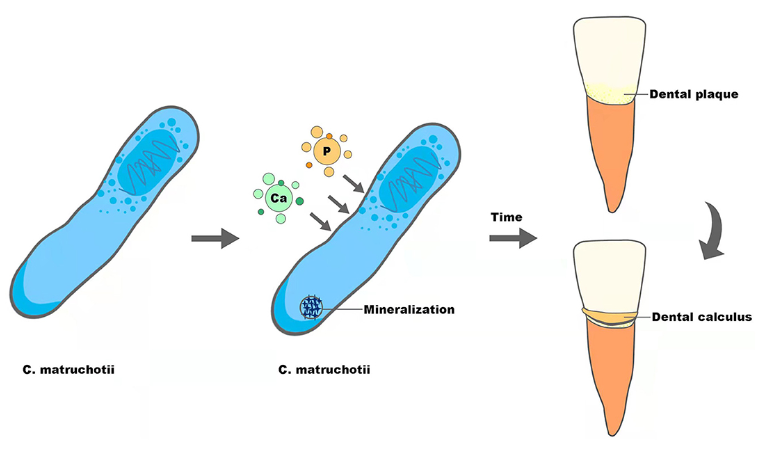New findings on biofilm on teeth – what knowledge of the unusual mode of division of the bacterium Corynebacterium matruchotii reveals
Introduction to the Microscopic Wonders of Our Mouths
The human mouth is a bustling ecosystem teeming with life. Within this intricate environment, over 500 species of bacteria coexist, forming complex and structured communities known as biofilms. Among these microscopic inhabitants, Corynebacterium matruchotii stands out for its unique and extraordinary method of cell division. Unlike the majority of bacteria that split into two daughter cells, C. matruchotii has evolved a rare process known as multiple fission, where a single mother cell divides into multiple progeny simultaneously. This discovery by the Marine Biology Laboratory (MBL) and ADA Forsyth has far-reaching implications for our understanding of bacterial growth, biofilm formation, and the broader dynamics of the human microbiome.
Corynebacterium matruchotii: The Foundation of Dental Plaque
Dental plaque, a familiar yet often overlooked biofilm, is more than just an inconvenience. It is a dynamic, living forest of bacteria, with C. matruchotii playing a pivotal role as the structural backbone. Just as trees form the canopy in a rainforest, C. matruchotii filaments create a spatial framework within the plaque, supporting a myriad of other bacterial species. This scaffolding function is essential for the stability and organization of the microbial community in dental plaque, making C. matruchotii a cornerstone of oral microbiology.
Multiple Fission: A Rare and Remarkable Process
What sets C. matruchotii apart from other bacteria is its ability to undergo multiple fission, a process rarely observed in the microbial world. Under this mechanism, a single filamentous cell of C. matruchotii can divide into up to 14 daughter cells, depending on its length. This capability is not just an anomaly but a critical adaptation that allows the bacterium to thrive in the dense, competitive environment of the oral biofilm.

Nucleoids are condensed between multiple developing septa in dividing cells. Columns (A–C) show cells representing three cell cycle stages: elongating, elongating and septating, and elongating, septating, and dividing. Cells were grown with a long exposure (6 h) of Rf470DL, followed by washing and a 45 min HADA exposure. Then cells were washed in PBS and labeled with the double-stranded DNA stain SYBR green. Transmitted light images (Top row) are single z-slices. Lower rows are maximum projection images of 3 z-slices (showing a depth of 1 µm) for the fluorescence channels corresponding with the experiment overview schematic. (Scale bar: 10 µm.)
.
Diagram: Multiple Fission Process in Corynebacterium matruchotii

Tip Extension: A Growth Strategy Unlike Any Other
In addition to its unique division method, C. matruchotii exhibits a growth strategy known as “tip extension,” where new cell material is added only at one end of the filament. This contrasts sharply with the more common binary fission, where growth occurs uniformly across the cell. Tip extension allows C. matruchotii to elongate efficiently and prepare for its eventual multiple fission, enabling the bacterium to occupy and explore new territories within the biofilm.
The Role of Corynebacterium in the Human Microbiome
Beyond its significance in dental plaque, C. matruchotii is a key player in the broader context of the human microbiome. This bacterium, along with its relatives found in the skin and nasal cavities, illustrates the diversity and adaptability of microbial life in different bodily environments. However, unlike its shorter, rod-shaped cousins, C. matruchotii has evolved to meet the specific challenges of life in the mouth, where competition for space and resources is fierce.
Evolutionary Adaptations to a Competitive Habitat
The dense and competitive environment of dental plaque likely drove the evolution of C. matruchotii‘s unique growth and division strategies. By elongating and dividing through multiple fission, this bacterium can rapidly expand its presence within the biofilm, ensuring its survival and dominance in this microscopic battleground. This evolutionary innovation not only highlights the adaptability of bacteria but also underscores the complexity of the microbial ecosystems within our bodies.
Implications for Oral Health and Beyond
Understanding the biology of C. matruchotii and its role in dental plaque is more than a scientific curiosity; it has direct implications for oral health. The resilience and rapid growth of this bacterium contribute to the persistence of dental plaque, even in the face of diligent oral hygiene practices. As researchers continue to uncover the secrets of C. matruchotii, new strategies for managing plaque and maintaining oral health may emerge.
The Future of Microbial Research
The discovery of multiple fission in C. matruchotii opens new avenues for research into bacterial cell division, biofilm dynamics, and microbial ecology. It challenges existing paradigms and invites scientists to explore how such processes might be leveraged or mitigated to promote health or prevent disease. As we deepen our understanding of these microscopic processes, we move closer to unraveling the complexities of the human microbiome and its impact on overall health.
Conclusion: The Hidden Forest in Our Mouths
Corynebacterium matruchotii is not just another bacterium; it is a master of survival and adaptation within the competitive world of dental plaque. Its ability to grow through tip extension and divide by multiple fission makes it a unique and formidable player in the oral microbiome. As we continue to explore the intricate world of these microorganisms, we gain valuable insights into the unseen forces that shape our health. In the microbial forest of our mouths, C. matruchotii stands tall, a testament to the remarkable diversity and ingenuity of life at the microscopic scale.
Sources
- ScienceDaily – Open wide: Human mouth bacteria reproduce through rare form of cell division – September 3, 2024
- PNAS – Tip extension and simultaneous multiple fission in a filamentous bacterium – September 3, 2024








